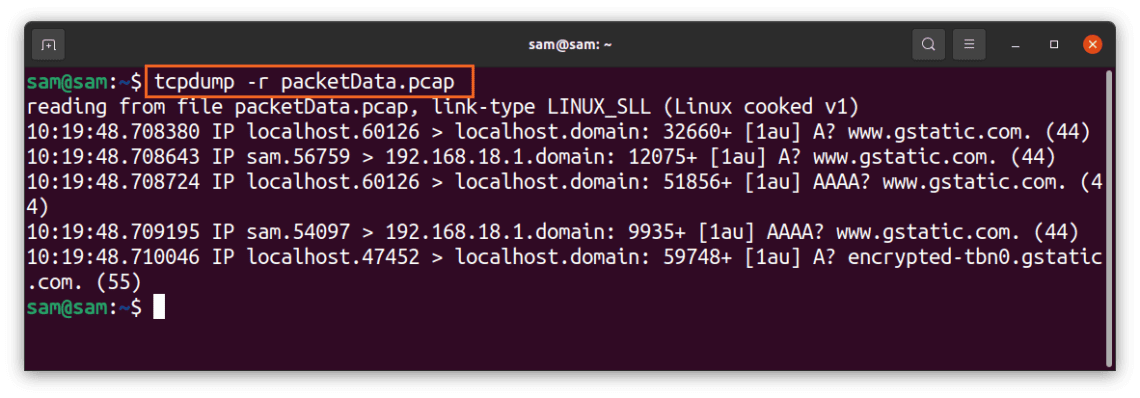

Standard output is used if file is -.Finding a fault can be tedious via Wireshark. They can later be printed with the -r option. Write the raw packets to file rather than parsing and printing them out. Ties are broken by choosing the earliest match.

If unspecified, tcpdump searches the system interface list for the lowest numbered, configured up interface (excluding loopback). Setting snaplen to 0 means use the required length to catch whole packets. You should limit snaplen to the smallest number that will capture the protocol information you’re interested in. Note that taking larger snapshots both increases the amount of time it takes to process packets and, effectively, decreases the amount of packet buffering. Packets truncated because of a limited snapshot are indicated in the output with ``“, where proto is the name of the protocol level at which the truncation has occurred. 68 bytes is adequate for IP, ICMP, TCP and UDP but may truncate protocol information from name server and NFS packets (see below). Snarf snaplen bytes of data from each packet rather than the default of 68 (with SunOS’s NIT, the minimum is actually 96).

Print absolute, rather than relative, TCP sequence numbers. Even if -x is not also set, some parts of some packets may be printed in hex/ascii. This is very handy for analysing new protocols. Thus if -x is also set, the packet is printed in hex/ascii. For example, additional fields are printed from NFS reply packets, and SMB packets are fully decoded. to names either.Įven more verbose output. Text below is copied from tcpdump man pageĭon’t convert protocol and port numbers etc. You can then import the file into wireshark for analysis. Will capture 1514 bytes of all packets on interface “em0” and dump it to the file “/tmp/em0.dumptcp”. $tcpdump -nnvvXSs 1514 -i em0 -w /tmp/em0.dumptcp Capturing the hole packet on your NIC for later analysis with wireshark


 0 kommentar(er)
0 kommentar(er)
